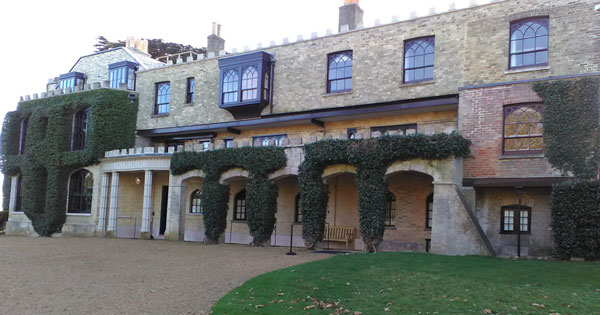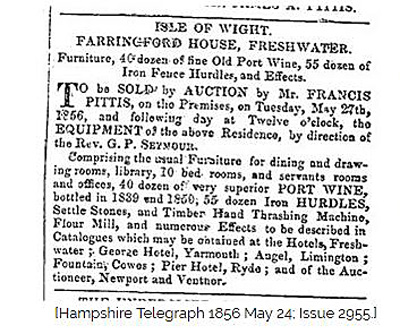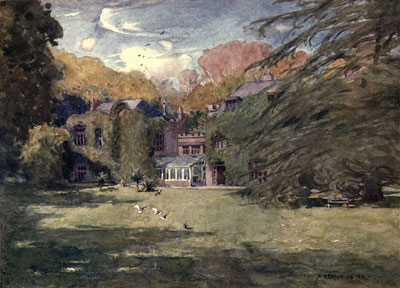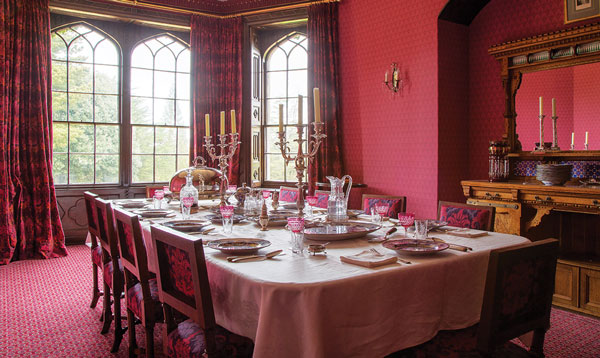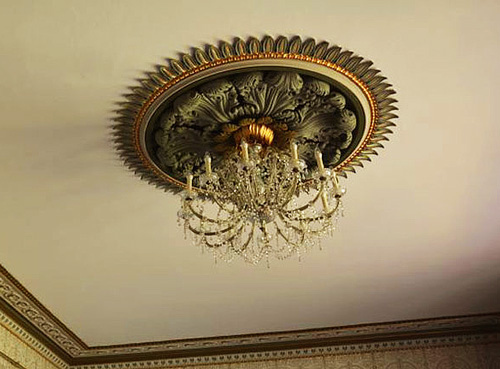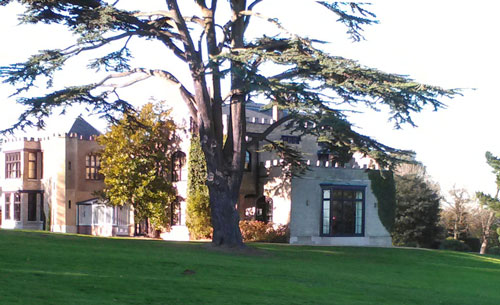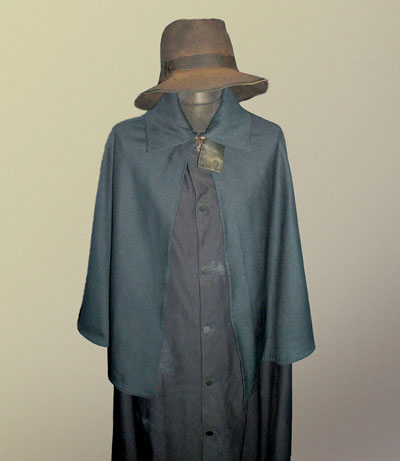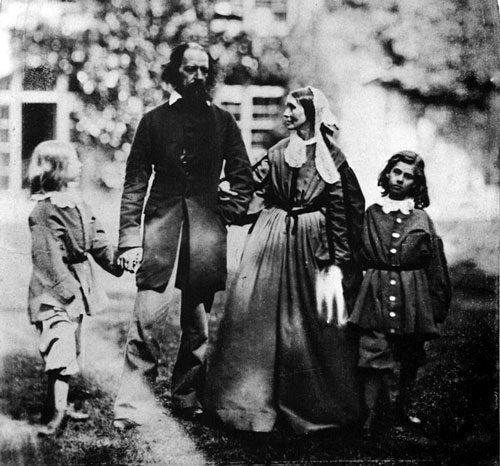The last time I was there was during the bicentennial exhibition of 2009. The new owners were just embarking on its very earliest days of restoration then. And it still retained a lot of the incongruous character of its more recent past as a hotel. It was for a time even owned by the holidiay-camp firm Pontins!
Since those shadowy days, when the precious heritage of the place could possibly have been lost, there have been enormous positive changes. And for anyone interested in the work of Tennyson, or for any enthusiast of Victorian history or Gothic Romanticism, it really is worth a visit. This is largely due to the authenticity of what has been achieved during the restoration, undertaken privately, and which, one has to conclude, has surely been a labour of love on an heroic scale.
Alfred Heaton Cooper's 1908 painting of Farringford captures the breezy vitality of its seaside location perfectly.
Thanks to journals and a detailed inventory made by Emily Tennyson in 1887, many original items of furniture and art from the house have been reinstated or brought back from elsewhere. These include Tennysons desk and some fine watercolours by Victorian artist Helen Allingham.
